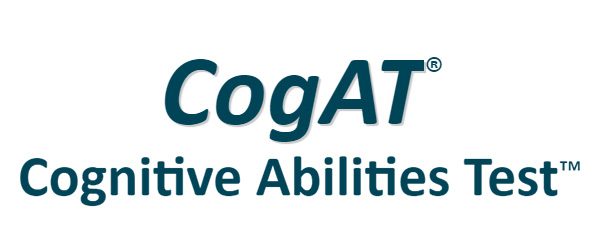
How To Study for CogAT Grade 4 Test – Helpful Guide For Parents
The Cognitive Aptitude Test (CogAT) will help determine if your child is gifted or if they will need extra assistance in school. Basically, you will be able to see how far your child has come with their cognitive development compared to other students in their grade. Many parents have a desire to help their children have high academic standards, and the CogAT can help give an accurate evaluation of their cognitive level.
If you are wondering about how the CogAT test works for 4th graders and how to help your child score well, read on. This article will tell you all you need to know and point you to the top prep materials available.
Table of Contents
What Is the CogAT Test Grade 4?
There are CogAT tests available for children from kindergarten to 12th grade, each with different content that is accurate to each student’s corresponding grade. Among the CogAT tests, there are subtests that will help evaluate different aspects of the student’s knowledge with varying difficulty ranges.
It helps to know that there are two different versions of the CogAT that are meant for different grade levels.
- The Primary Edition is administered to children from kindergarten through 2nd grade
- The Multilevel Edition is administered to children from 3rd grade to 12th grade.
The tests will be administered by the child’s teacher or by a proctor, and each test can be taken individually or within a group setting.
What Is Included in the Assessments?
The assessments are structured to include different subtests to evaluate the specific skills of each student. Overall, the test involves answering a set of 176 questions with a time limit of 90 minutes. The format of the test involves three different parts:
- A verbal battery
- A non-verbal battery
- A quantitative battery
Verbal Battery
The verbal battery section will evaluate a student’s vocabulary skills, as well as their verbal memory and efficiency. This section will help determine how well the student is able to comprehend passages and, essentially, how words relate to one another. For example, some of the questions may ask which word will be the best fit in certain sentences. Students can expect a total of three parts to the verbal battery section: picture/verbal analogies, sentence completion, and picture/verbal classification.
Non-Verbal Battery
The non-verbal battery section will evaluate a student’s reasoning skills by using shapes and images. They will be shown different images or shapes to see how each answer matches up with the sequence provided. Students can expect three parts of the non-verbal battery section, which are paper folding, figure classification, and figure matrices.
Quantitative Battery
The quantitative battery section of the assessment will evaluate how students answer number-based questions and how well they do with their mathematical skills. They will be shown sequences, numbers, equations, and many other types of questions. The three parts of the quantitative battery section are number puzzles, number series, and number analogies.
Sample Questions
Here are some sample questions of what your child may encounter in the test:
- Cat —> kitten; dog —> __
- Find the word that best completes the sentence: Susie was ___ at the price of a bag of oranges on sale at the supermarket.
- Choose the word that best fits in with this sequence of words: dolphin, whale, shark
- Choose the number that best fits in with the following sequence of numbers: 5 —> 10, 3 —> 6
- Choose the number that fits into the box to solve this math problem: 4 x 3 + | | = 12
- Choose the image that fits into the sequence of images provided
- Choose the answer that would show the correct way the paper would appear after it is unfolded.
- Lead is to pencil as ink is to ____
- The town council ____ for many days before finally reaching a ____.
- Which of these puzzle pieces would fit in the missing space?
- Choose the word that best fits with this group of words: Great Dane, Chihuahua, Yorkie
- | | + 7 = 5 x [] [] = 6 – 2
- 5 10 15 20 [ ] 30 35 40
- The shapes in these images follow a distinct pattern. Choose the answer with the shapes that will complete the sequence.
- August → September; Saturday → ___
- 8 → 16, 24 → 48, 20 → __
Scoring
The CogAT is scored with a raw score and a stanine score. Those scores will evaluate the students based on their ages to measure their cognitive abilities accurately according to their grade and skill level, and the calculation involves using age norms and grade norms. This will ensure that the student’s scores are compared accurately and fairly to other students in their age group and grade all across the nation.
There are three columns under the age sections category of the CogAT score report: the age percentile rank, the stanine test score, and the standard age score. All of these scores are displayed on the Age Percentile (APR) graph. As stated, the scores can help determine if a student is capable of being placed in a special class or if they will need some extra academic help.
The stanine test score is the second column of the age score section. The stanine test score has a normalized standard scale of 9 levels, ranging from 1 as the lowest and 9 as the highest. A student that has a score of 5 and below may need a bit of academic assistance as far as cognitive development is concerned, while students with a score between 7 and 9 may be considered to have above-average cognitive abilities.
The age percentile rank is the third column in the age scores section. This column will display the percentage of students who scored lower than a particular student. For example, if a student scores 40 on a verbal battery test, it means that 40% of students have scored lower than that student. Normally, the average age percentile rank is 50, but there are many students who make above that average score in different parts of the CogAT assessments.
The standard age score is the first column of the age score section. This column groups students together by age, from around 5 years old to 18 years old. It is implemented to compare a student’s test score to other students around their age so they can see each student’s level of cognitive development. Students can have a higher or lower level of development based upon the score they receive, while others may make it into an average score range. The average score for a standard age score is 100, with a standard deviation of 16.
The APR graph also includes scores that relate to the ages of the students and displays the composite scores and the scores of each of the batteries in the assessment. The raw score contains three different sections: the amount of content on the assessment, how many of the questions were attempted by the students, and how many questions they got right in each individual section.
The local scores correlate to the local stanine and percentile rank of each student within the same school system, while the grade scores correlate to the national percentile rank of students across the country based on their grade level. The composite score will gather up the individual scores from all three sections of the assessment and put them together to show how your child ranks in comparison to other students with their cognitive development. The composite score will vary between each student.
How to Prepare for the Test
There are many methods that you can use to help your child prepare for the test. TestPrep-Online offers preparation packs that parents can use to help their children study for the content that will be included in the assessments. Put a solid studying schedule into place so your child can be more prepared and likely receive a better score on their assessment.
Encourage your child to dedicate certain times of the day to studying while also giving them plenty of time for breaks, rest, social time, and free time. Tests have a tendency to make students nervous from the pressure they feel to score well. This is why overdoing study time may only place even more pressure on your child and can cause them to feel overwhelmed, tired, and unmotivated.
Another important way to help your child prepare for the test is to boost their confidence. If they feel confident about taking the test and finding the answers to each question, they are more likely to score higher. Find ways to encourage them during your study sessions so they will be able to face the actual test with enthusiasm. One effective way to boost your child’s confidence is by helping them familiarize themselves with sample questions and the test format on TestPrep-Online. When they know what to expect, they won’t feel as nervous.
Allow your child to study in a stress-free environment and do your best not to put too much stress on them. Preparation is the key for any instance, especially with upcoming tests. Help find methods to keep your child focused so they can take their time to find the best solution to any question they will have to answer. A healthy diet, plenty of rest, and relaxation time can do wonders for helping your child prepare for test day.
Conclusion
As with any test, preparation is a significant factor in how well a student scores. By helping your child prepare for the test with TestPrep-Online, your child will be more familiar with the test format and questions they will encounter, thereby boosting their confidence and helping them score better.
Sarah is an accomplished educator, researcher and author in the field of testing and assessment. She has worked with various educational institutions and organisations to develop innovative evaluation methods and enhance student learning. Sarah has published numerous articles and books on assessment and learning. Her passion for promoting equity and fairness in the education system fuels her commitment to sharing insights and best practices with educators and policymakers around the world.





